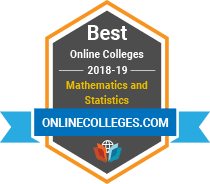Online Colleges for Mathematics and Statistics
We’ve done the research and created comprehensive guides to online schools for mathimatics & statistics. Continue below and dive into the details on mathimatics & statistics degree programs, tuition and fees, related career outlooks, employable skills and much more.
Nov 17, 2017 | By OnlineColleges Editors
